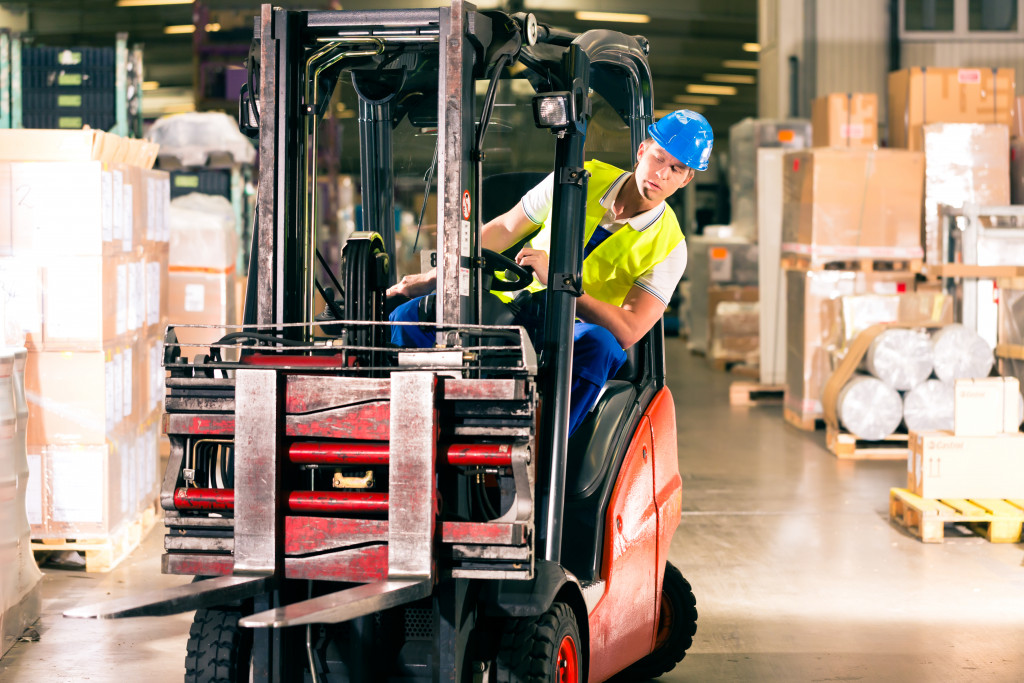- Warehouses in advanced countries should prioritize efficiency and safety.
- Robust risk mitigation strategies are essential due to potential hazards like inventory damage.
- Comprehensive risk assessment is the first step in identifying warehouse risks.
- Employee training, especially for material handling operations and emergency response, enhances safety.
- Utilizing technology, such as automated monitoring systems, enhances risk management effectiveness.
In the bustling world of warehousing, efficiency and safety are paramount. Especially in advanced countries like Singapore and Japan, warehouses serve as the epicenter of logistical operations, housing valuable inventory and facilitating the smooth flow of goods. However, with great inventory comes great responsibility. Warehouses are rife with potential risks, ranging from inventory damage to workplace accidents. Thus, implementing robust risk mitigation strategies is crucial to safeguarding both assets and personnel. This article will explore best practices for mitigating warehouse risks and ensuring operational excellence and workplace safety.
Comprehensive Risk Assessment
Before delving into risk mitigation strategies, conducting a comprehensive risk assessment is imperative. This entails identifying potential hazards within the warehouse environment, ranging from structural vulnerabilities to operational bottlenecks. Key areas to consider include:
Inventory Management Systems
Effective inventory management systems play a pivotal role in risk mitigation within warehouses. By implementing state-of-the-art inventory tracking software, warehouse managers can minimize the risk of inventory discrepancies and stockouts, thus averting potential operational disruptions.
Structural Integrity
Warehouse infrastructure must undergo rigorous evaluation to ensure structural integrity. Regular inspections for signs of wear and tear, such as cracks or corrosion, are essential to preempting structural failures that could pose safety hazards to personnel and equipment.
Employee Training and Education
Investing in comprehensive employee training and education programs is instrumental in fostering a culture of safety within warehouses. Well-trained personnel are better equipped to identify and address potential risks proactively. Key elements of effective training programs include:

Forklift Operation Safety
Forklifts are indispensable tools in warehouse operations, facilitating the movement of heavy loads with ease. However, improper forklift operation poses significant risks, ranging from collisions to product damage. Thorough training on forklift operation safety protocols is essential to mitigating these risks and ensuring the well-being of both operators and bystanders.
Emergency Response Procedures
In the event of an emergency, a swift and effective response can mean the difference between a minor incident and a catastrophic event. Warehouse personnel must be trained in emergency response procedures, including evacuation protocols and first aid techniques, to mitigate the impact of unforeseen circumstances such as fires or chemical spills.
Implementing Robust Safety Protocols
Establishing robust safety protocols is paramount to mitigating risks within warehouses. These protocols should encompass a wide range of areas, including:
Personal Protective Equipment (PPE)
Providing appropriate personal protective equipment is essential to safeguarding warehouse personnel against potential hazards. From hard hats to high-visibility vests, ensuring that employees have access to the necessary PPE significantly reduces the risk of workplace injuries.

Hazard Signage and Markings
Clear and prominent signage is essential for alerting warehouse personnel to potential hazards and guiding them on safe practices. Hazard markings, such as floor tape indicating pedestrian walkways and forklift zones, help minimize the risk of accidents and streamline workflow efficiency.
Regular Maintenance and Inspections
Regular maintenance and inspections are vital components of risk mitigation strategies in warehouses. By proactively identifying and addressing potential issues, warehouse managers can prevent equipment malfunctions and structural failures that could lead to accidents or operational disruptions. Key aspects of maintenance and inspections include:
Equipment Maintenance
Fork trucks, conveyor systems, and other warehouse equipment must undergo routine maintenance to ensure optimal performance and safety. Scheduled inspections, lubrication, and repairs help preempt equipment failures that could compromise operational efficiency and pose safety risks to personnel.
Facility Inspections
Routine inspections of warehouse facilities are essential for identifying and addressing potential hazards, such as blocked emergency exits or damaged shelving. By conducting thorough inspections on a regular basis, warehouse managers can maintain a safe working environment and mitigate the risk of accidents.
Utilizing Technology for Risk Management
Advancements in technology offer innovative solutions for enhancing risk management in warehouses. Leveraging cutting-edge technologies enables warehouses to identify and mitigate risks more effectively. Key technological solutions include:
Automated Safety Monitoring Systems
Deploying automated safety monitoring systems, such as sensors and cameras, allows warehouses to detect potential hazards in real time. These systems provide proactive alerts and facilitate swift intervention, reducing the likelihood of accidents and injuries.
Data Analytics for Risk Prediction
Harnessing the power of data analytics enables warehouses to predict and mitigate risks proactively. By analyzing historical data and identifying patterns, warehouses can anticipate potential risks and implement preventive measures, thus minimizing the likelihood of incidents and optimizing operational efficiency.
In the dynamic landscape of warehouse operations, risk mitigation is a multifaceted endeavor. By conducting comprehensive risk assessments, investing in employee training, establishing robust safety protocols, and leveraging technology for risk management, warehouses can create safer working environments and enhance operational efficiency. By adhering to best practices and prioritizing safety, warehouses can navigate the complexities of risk management and thrive in today’s competitive market landscape. With diligence and innovation, warehouses can cultivate a culture of safety and resilience, ensuring the well-being of personnel and assets while maximizing productivity and profitability.
